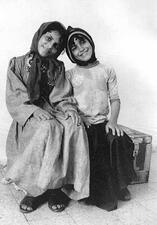Religion: Spirituality and Religious Life
Sex
![Sheftall, Frances - still image [media] Sheftall, Frances - still image [media]](/sites/default/files/styles/gallery_item/public/mediaobjects/Sheftall-Frances_small.jpg?itok=phhb_bLj)
Frances Hart Sheftall
Benjamin Aron Slonik
Benjamin Aron Slonik, a Polish rabbi and student of the Maharshal and Rema, was notable for his independent approach to halakha. His rulings often went against his colleagues, including on women’s halakhot.
Sociodemography
Over the last several decades, Jewish women attained significant achievement in the socio-economic sphere and played a leading role in maintaining Jewish continuity. In general, Jewish women are educated and participate in the labor force at higher rates than their non-Jewish counterparts.

Sol Hachuel
Sol Hachuel, or as she is also known Lalla Soulika or Sol ha-tsaddeqet, was a Moroccan Jewish martyr from the first half of the nineteenth century. Hachuel was born in Tangier and beheaded in Fez at the age of sixteen or seventeen. Her story has inspired countless versions among North African Jews and Muslims as well as Europeans, and her tomb remains a prominent pilgrimage site in Morocco.
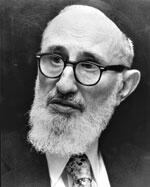
Soloveitchik, Rabbi Joseph Dov
Joseph Dov Soloveitchik shaped Jewish practice and public opinion through the era of second-wave feminism. Despite his sometimes progressive actions, Soloveitchik maintained that women and men had separate religious and familial roles. These positions from the leader of the Modern Orthodox community cemented resistance to Orthodox feminists’ demands to increase their participation in Jewish rituals.

South Africa
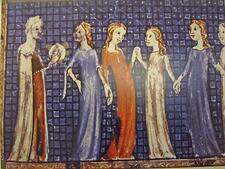
Medieval Spain
Written histories of Jews in medieval Spain rarely include women, so one must seek alternate sources. Marital status was the frequent topic of rabbinic responsa. Some Jewish women made their own income as merchants and moneylenders. Inheritance laws were problematic for Jewish women – disputes were settled in both Jewish and non-Jewish courts.
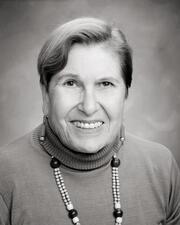
Marcia Cohn Spiegel
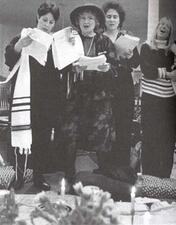
Spirituality in the United States
Jewish women’s spirituality developed historically within the confines of a patriarchal tradition. Over time, feminists have developed rituals and created spaces that honor the unique experiences of women.
Suburbanization in the United States
Jews migrated in large numbers to newly constructed suburbs after World War II and the end of restrictive covenants that had excluded them. During the day, suburbs were largely female spaces where married Jewish women cared for their children and private homes, while volunteering for Jewish and civic activities. Jewish daughters raised in suburbs enjoyed middle-class comforts but also experienced pressures to conform to American gentile ideals of beauty.
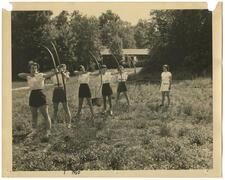
Summer Camping in the United States
The Jewish summer camp movement shaped ethnic-American identity and Jewish childhood throughout the twentieth and into the twenty-first century. A means to fight anti-Semitism by showcasing patriotism and developing the camper’s physical fitness, it was also a safe space to explore, question and craft religious traditions and rituals, novel ideas about girlhood, and the possibilities of womanhood.
Faige Teitelbaum
When Faige Teitelbaum married Satmar rebbe Rabbi Joel Teitelbaum in 1936, she became the Satmar rebbetzin, in which capacity she was very active in charitable activities. After her husband’s death, she became the only woman in the Hasidic world to function as a de facto rebbe and leader.
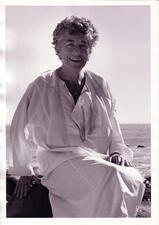
Savina Teubal
Rivke Bas Me’ir Tiktiner
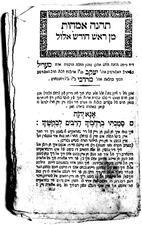
Tkhines
Tkhines were collections of prayers published in Yiddish, often specifically for women, across Europe from the sixteenth to the nineteenth century. The prayers addressed many themes of domestic and family life, although some also suggested women ought to be allowed into traditionally male spaces.
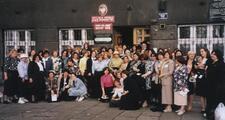
Torah Study
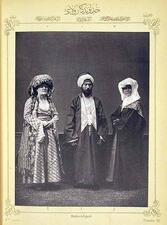
Turkey: Ottoman and Post Ottoman
The Jewish population of Turkey navigated far-reaching changes in the political, social, and geopolitical spheres in the late nineteenth and the early twentieth centuries, as the Ottoman Empire pursued reform and collapsed and the Turkish Republic that took its place imposed a process of “Turkification” on its residents. During this period, Jewish women partook in traditional customs relating to religion, family, and the home, while also accessing new opportunities in the public sphere through education and political engagement.
Union of Jewish Women
Influenced by their American counterparts, Anglo-Jewish women organized a Conference of Jewish Women in 1902, which led to the foundation of a national organization, the Union of Jewish Women. The UJW determined the social service agenda for English Jewish women until World War I.
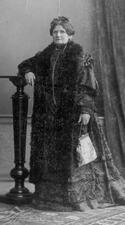
Pauline Wengeroff
Pauline Wengeroff was the author of an extraordinary two-volume work in German, Memoirs of a Grandmother: Scenes from the Cultural History of the Jews of Russia in the Nineteenth Century. First published in 1910, the memoir richly depicts traditional Jewish society in Russia, its unraveling during the nineteenth century, and the devastating impact this dissolution had on families and especially on women.
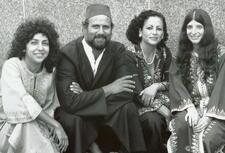
Women and Sephardic Music
Ladino or Judeo-Spanish Sephardic songs are primarily a women’s repertoire. The two main traditions are that of northern Morocco and the Eastern Mediterranean, primarily today’s Turkey, Greece, the Balkans.
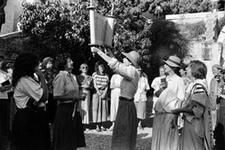
Women of the Wall
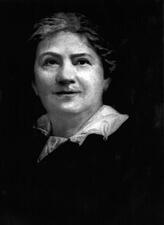
Women's League for Conservative Judaism
Women’s League for Conservative Judaism (WLCJ), founded in 1918, is the national organization of Conservative sisterhoods. Throughout its history WLCJ has foregrounded women’s education and engagement in order to enrich the spiritual and religious lives of Conservative/Masorti women and to empower them as leaders in their homes, synagogues, and communities.
Marjorie Wyler
